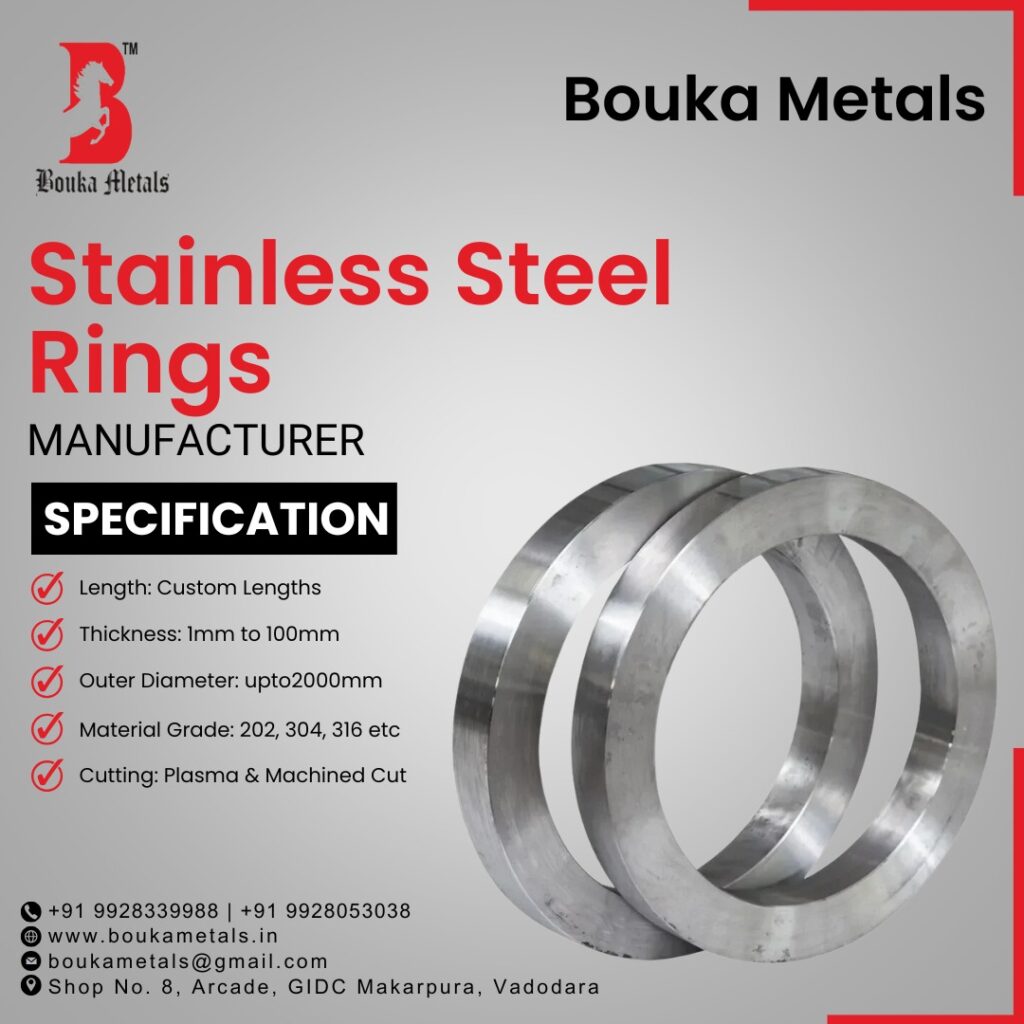Introduction
Stainless steel rings are versatile components used in a wide range of applications across various industries. Their high corrosion resistance, durability, and hygienic properties make them ideal for demanding environments. In this blog post, we will delve into the characteristics and applications of stainless steel rings, highlighting their importance in various sectors.
Characteristics of Stainless Steel Rings
Precision Engineering: Stainless steel rings are manufactured with high precision, ensuring accurate dimensions and tolerances. This level of precision is crucial for applications where tight tolerances are required.
Customizable Sizes: Stainless steel rings can be manufactured in a wide range of sizes, from small to large diameters, to meet specific application requirements.
Thickness Variations: The thickness of stainless steel rings can be customized to suit different load-bearing capacities and design requirements.
Material Grades: Stainless steel rings are available in various grades, including 202, 304, and 316, each offering a unique combination of corrosion resistance and mechanical properties.
Cutting Options: Stainless steel rings can be cut using plasma or machined cutting techniques, ensuring high precision and surface finish.
Applications of Stainless Steel Rings
Industrial Machinery: Stainless steel rings are widely used in the manufacturing of industrial machinery, including bearings, gears, and shafts. Their high strength and durability ensure reliable performance in demanding environments.
Aerospace: In the aerospace industry, stainless steel rings are used in aircraft components, such as engine parts and landing gear. Their lightweight and high-strength properties make them ideal for aerospace applications.
Automotive: Stainless steel rings are used in the automotive industry for manufacturing various components, including engine parts, suspension systems, and exhaust systems.
Medical Devices: In the medical device industry, stainless steel rings are used in the manufacturing of implants, prosthetics, and other medical devices. Their biocompatibility and corrosion resistance make them suitable for these applications.
Architectural: Stainless steel rings can be used in architectural applications, such as decorative elements, structural components, and handrails. Their aesthetic appeal and durability make them popular choices for modern designs.
Benefits of Stainless Steel Rings
Corrosion Resistance: Stainless steel is highly resistant to corrosion, making it suitable for various environments and applications.
Strength and Durability: Stainless steel rings are known for their exceptional strength and durability, ensuring long-lasting performance.
Versatility: Stainless steel rings can be used in a wide range of applications, from industrial machinery to architectural elements.
Precision Engineering: Stainless steel rings are manufactured with high precision, ensuring accurate dimensions and tolerances.
Hygienic: Stainless steel is non-porous and easy to clean, making it ideal for applications where hygiene is critical.
Conclusion
Stainless steel rings offer a wide range of benefits and are widely used across various industries. Their precision engineering, customizable sizes, and high-quality materials make them ideal for demanding applications. By understanding the characteristics and applications of stainless steel rings, industries can leverage their advantages to enhance efficiency, safety, and performance.





